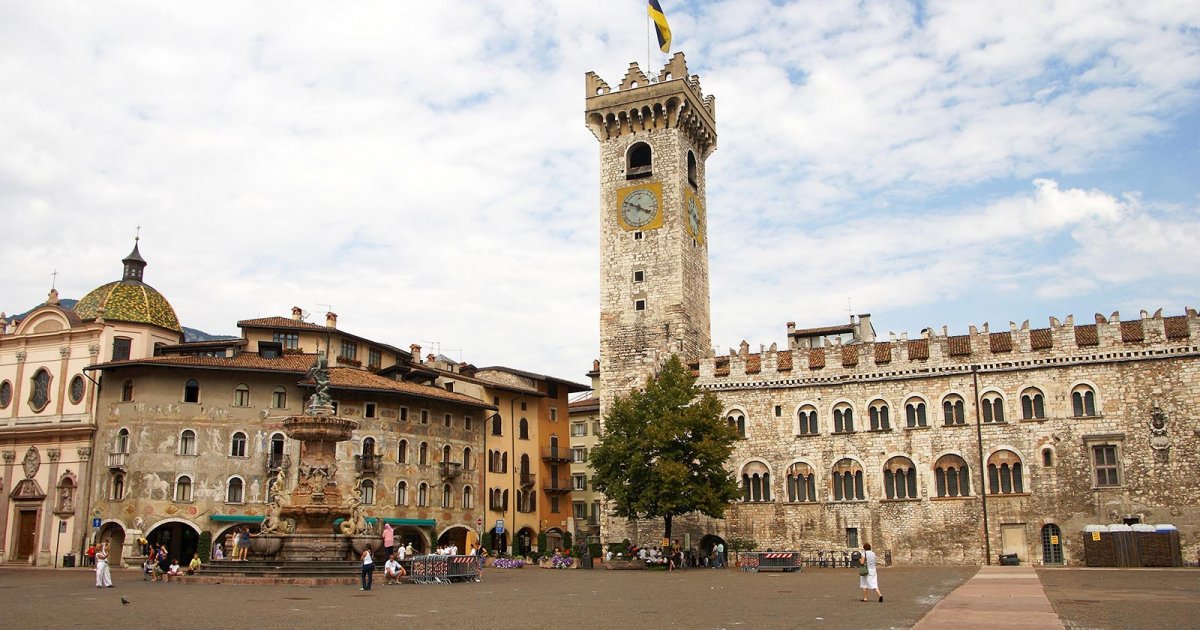PIAZZA DUOMO, Part 2
 Language: English / USA
Language: English / USA
On the eastern side of the square is the imposing Civic Tower and the adjacent Palazzo Pretorio, testifying to the city’s glorious medieval past.
With a height of 41 meters, the Civic Tower rises in the Trento skyline, at the point occupied in Roman times by Porta Veronese, the main gateway into the city.
Built as a bishop’s residence in the second half of the 12th century, the Civic Tower did not reach its current height until the second half of the following century, when a further 15 meters were added to it. At the beginning of the 14th century, it became the property of the Municipality, which had two bells installed at the top, joined in 1448 by a mechanical clock, while the inside of the tower was used as a prison.
In 1789, the two bells were replaced by a larger bell known as the Renga bell; the name derives from the term arenga, or citizens’ assembly, because it was rung only when the local citizens gathered here, or for death sentences carried out in the square.
Like the Civic Tower next to it, the outline of Palazzo Pretorio is also embellished with merlons and has a Romanesque facade characterised by long rows of two- and three-mullioned windows, divided by one or two slender columns. Construction of Palazzo Pretorio began in the 9th century and was completed in the 13th century, and over its long existence it has been used for a variety of purposes: from a bishop’s residence to the seat of the local council, the Podestà and the Court. It owes its name to the fact that during the 12th century, when it became a court of justice, it was home to the local magistrate, pretore in Italian.
Following lengthy work to restore the building to its original appearance, Palazzo Pretorio now hosts the collections of the Diocesan Museum of Trento. Inside, you can admire the finest objects that make up the Treasury of the Cathedral, as well as numerous artworks from all over the Trentino area.
An interesting fact: in the center of the square, directly opposite Palazzo Pretorio, you’ll notice an odd, long row of white marble slabs. They mark the spot where the square was once crossed by the Roggia Grande, an artificial canal that used to bring water here from the Adige River.
Our visit to Piazza Duomo ends here. MyWoWo would like to thank you - see you again at another Wonder of the World!



